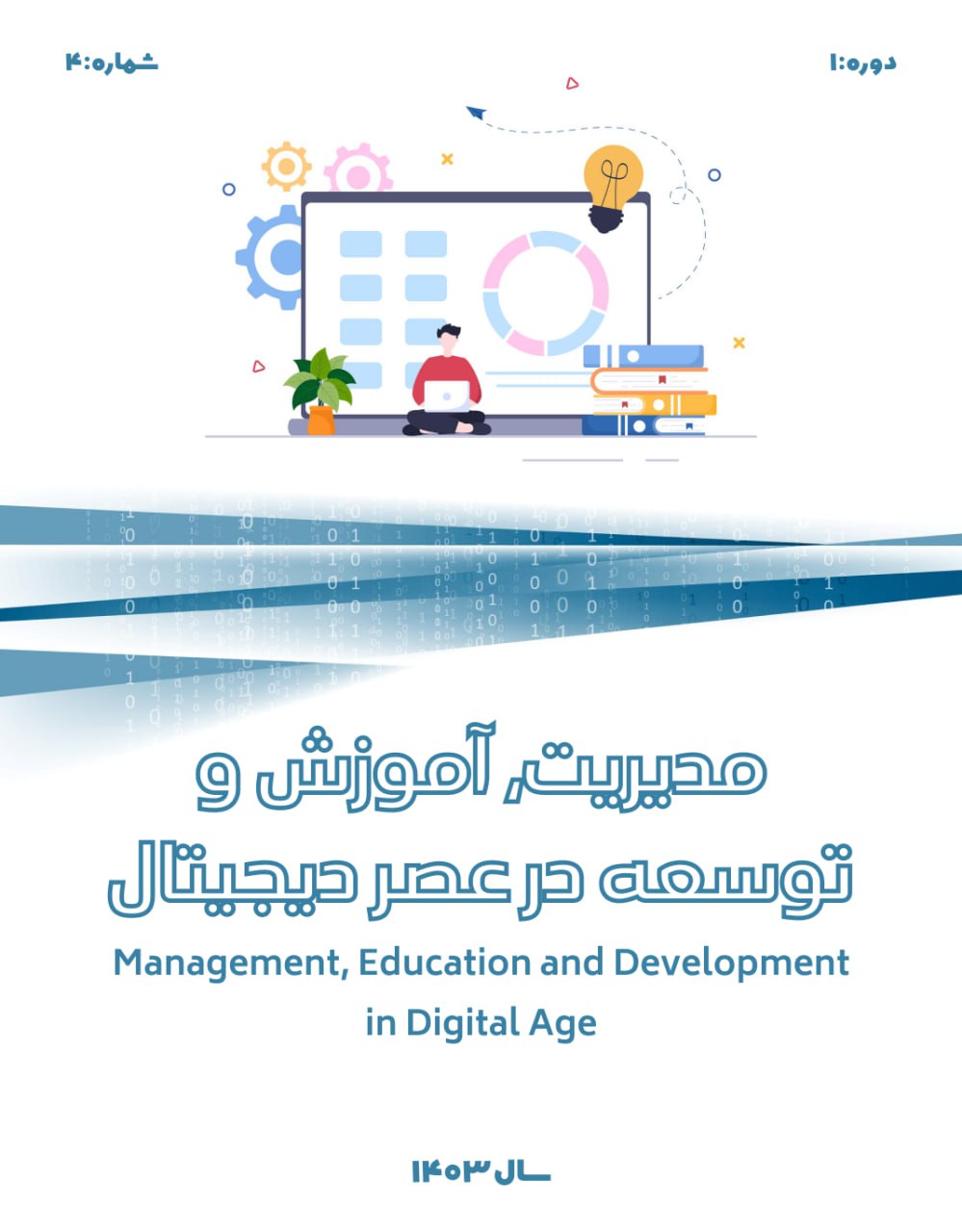طراحی الگوی یادگیری الکترونیکی دانشگاه آزاد اسلامی با رویکرد آمیخته
کلمات کلیدی:
یادگیری الکترونیکی , عوامل علی , مداخله گر, شرایط زمینه ای, راهبردها, پیامدها, برون دادهاچکیده
پژوهش حاضر با هدف طراحی الگوی یادگیری الکترونیکی دانشگاه آزاد اسلامی استان بوشهرانجام شده است. روش پژوهش از لحاظ هدف کاربردی و از نظر دادهها، آمیخته اکتشافی (کیفی-کمی) و از نظر ماهیت در بعد کیفی، داده بنیاد سیستمی (پارادایمی ) است و در بعد کمی، پیمایشی مقطعی است. جامعه آماری بخش کیفی شامل خبرگان حوزه مدیریت آموزشی که دارای تحصیلات دکتری تخصصی میباشند، و در بخش کمی اساتید هیات علمی دانشگاه بوشهر میباشد.به تعداد۱۰۰نفر (زن: ۵۶ مرد: ۴۴ )می باشند. روش نمونه گیری در بخش کیفی آگاهانه هدفمند از نوع نظری بوده و تعداد 12 نفر خبره انتخاب شدند که به اشباع نظری رسیدیم، در بخش کمی حجم نمونه که باکمک جدول مورگان ۸۰ نفر(۴۵زن و۳۵مرد) انتخاب شدند. ابزار سنجش پس از کدگذاری باز و محوری حاصل شده، در قالب یک فرم تنظیم و برای خبرگان جهت کدگذاری انتخابی ارسال و مورد اعتبار سنجی قرار گرفت و بر این اساس پرسشنامه محقق ساخته طراحی و میان نمونه آماری بصورت تصادفی انتخاب شده توزیع گردید. سپس دادههای جمع آوری شده با استفاده از آمار توصیفی و استنباطی تجزیه و تحلیل شد و در پایان ، 5 بعد، ۱۶مولفه و ۱۰۱ شاخص برای الگوی یادگیری الکترونیکی دانشگاه آزاد اسلامی بوشهر نهایی شد. پس از تأیید نهایی و اولویتبندی توسط خبرگان، ابعاد، مؤلفهها و شاخصهای سازندة الگو ترسیم شده، و مجدداً الگوی یادشده توسط خبرگان اعتباریابی شد.
دانلودها
دانلود
چاپ شده
ارسال
بازنگری
پذیرش
شماره
نوع مقاله
مجوز
حق نشر 2025 زهرا حیدری (نویسنده); لیلا شریفیان; عباس خورشیدی , بتول فقیه آرام , پری سوسهابی (نویسنده)

این پروژه تحت مجوز بین المللی Creative Commons Attribution-NonCommercial-NoDerivatives 4.0 می باشد.









